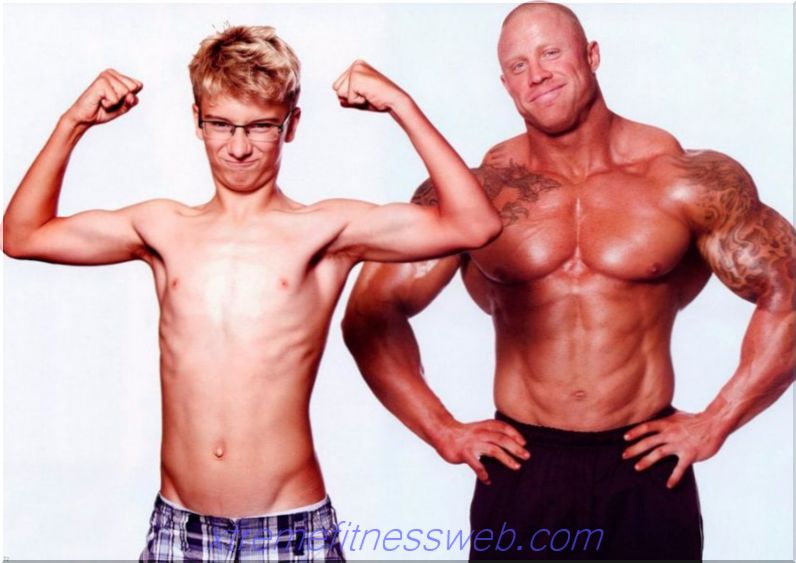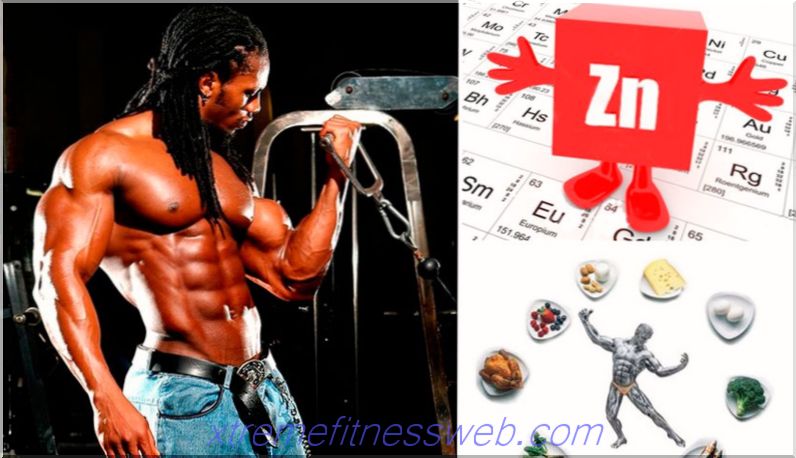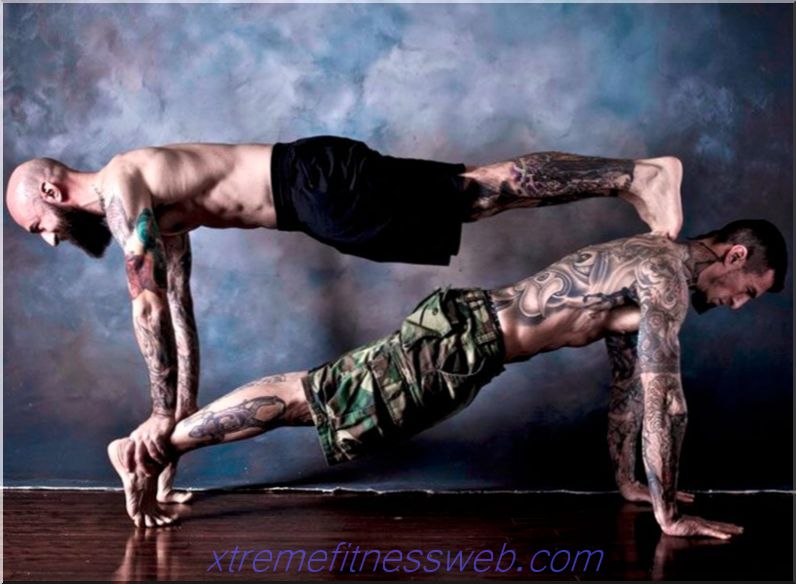- Anatomy and purpose of the quadriceps
- The structure of the quadriceps
- Basic quadriceps exercise
- Thigh quadriceps isolating exercises
- Downloading Quadriceps - Video

The thigh muscles are one of the largest muscles in the human body. The more developed these muscles are, the more enduring a person is and the higher the degree of physical readiness as a whole. Carrying out exercises with legs, a person directly affects the hip joints, having a positive effect on the general condition of the genitourinary system, unloading the knee joints. This happens if the classes are carried out in the gym. Classes in the gym are so attractive because you can only load certain muscle groups by choosing a particular sports equipment.
Content
- 1 Anatomy and purpose of quadriceps
- 2 The structure of the quadriceps
- 3 Basic exercise on quadriceps
- 3.1 Barbell Squats
- 3.2 Front Squats
- 3.3 Hack Squats
- 3.4 Leg Press
- 3.5 lunges
- 4 Isolating thigh quadriceps exercises
- 4.1 Leg extension exercises on the simulator
- 4.2 One leg press
- 5 Downloading Quadriceps - Video
Anatomy and purpose of the quadriceps
The basis of the thigh muscles is the quadriceps muscle, which consists of 4 muscles distributed evenly. During physical exertion, all efforts are evenly distributed on all muscle bundles, that is, on the entire quadriceps. This muscle group performs the following basic functions:
- This muscle group is able to hold the human body in a vertical position. It supports the human body while standing, not allowing the knee joints to buckle.
- During movement (running or walking), the quadriceps tends to be responsible for the proper flexion and extension of the knee joint, distributing the entire load correctly. At the same time, it makes it possible to tilt the pelvis in different directions, as well as pull the knees to the stomach.

The structure of the quadriceps
- The femoral part of the muscle is its lateral surface and takes part in all forms of movement in which the legs participate. It is the most circular component of this muscle bundle. It is also called the lateral muscle.
- The inner part of the thigh is formed by a wide medial muscle. In shape, it resembles a certain roundness on the inside of the knee. The medial muscle is also designed to provide normal flexion and extension of the knee.
- Between the medial and lateral muscles there is a wide intermediate muscle, which partially extends beyond the edges of these two muscles at the points of their connection with the knee. It is mainly used when jumping and running, as well as during squats.
- On the front of the thigh is the rectus muscle, which is part of the quadriceps complex. It is longer and forms the front semicircular part of the thigh. It is interesting in that it is not attached to the femur, while taking an active part in flexion and extension of the legs.
Quadriceps consists of various muscle groups, which are characterized by the speed of various exercises: slow and fast muscle fibers. As a result, exercises should have both power loads and aerobic.

Basic quadriceps exercise
The development of this muscle group is based on the use of basic exercises that contribute to the development of the athlete's strength and endurance associated with an increase in muscle fiber volume.
Squats
 Refers to one of the main exercises widely used by athletes. This exercise increases the functionality of the quadriceps, and also helps to strengthen the muscles of the buttocks. In this process, the muscles of the back, press and back of the thigh are involved. The effectiveness of the exercise depends on the optimality of the loads, otherwise the exercises can lead to serious injuries if you do not start exercising with low weight, practicing the squat technique. The technique is as follows:
Refers to one of the main exercises widely used by athletes. This exercise increases the functionality of the quadriceps, and also helps to strengthen the muscles of the buttocks. In this process, the muscles of the back, press and back of the thigh are involved. The effectiveness of the exercise depends on the optimality of the loads, otherwise the exercises can lead to serious injuries if you do not start exercising with low weight, practicing the squat technique. The technique is as follows:
- The bar of the rod should not be located in the neck, but should be on the back of the deltas and trapezoid.
- Keep your back straight and pull the shoulder blades so that the weight of the bar is evenly distributed. The chin is directed upwards so as not to provoke forward bends, which overload the lower back and can lead to injuries.
- To maintain balance, the feet are wider than the shoulders, and the socks look to the sides.
- Exercise begins with the movement of the pelvis back, as if you need to crouch.
- The knees of the legs should be fixed when the back of the thigh is parallel to the floor, but can be lower. It all depends on the degree of preparation of the athlete and the task. The lower the squat, the more efficient the muscles are.
- To rise from a sitting should be without sudden movements, maintaining balance. When the upper point is reached, the legs are not completely straightened, but remain somewhat bent, in order to avoid injuries to the knee joint.
Engaged in these exercises, do not get involved in maximum loads. For proper quadriceps formation, it might be better to replace the squat with a barbell with regular frontal squats, but also with a barbell.
 Front squats
Front squats
Such an exercise is similar to the previous one, but the bar has a slightly different arrangement, which strengthens the quadriceps more. The technique for performing this exercise is as follows:
- Grip is performed on straight arms located slightly wider than the shoulder.
- The bar is located on the front of the shoulders.
- The arms are bent, and their upper parts are parallel to the floor.
- After fixing the bar in this position, a squat is performed, the technique of which is similar to the previous one.
 Hack squats
Hack squats
Gack - the simulator is designed to strengthen the quadriceps, while exercises on it reduce the load on the spine. The loin is located on a movable base, the hands are held on the handrails, and the legs are on an inclined plane. Changing the width of the feet, you can shift the load relative to the side of the thighs.
- When performing the exercise should not be in a hurry and should not make sudden movements.
- Reaching maximum load, it is not recommended to fully extend the knees.
- All the load should fall on the quadriceps.
- Do not extend your knees beyond the line of socks.
 Leg Press
Leg Press
The main exercise, actively working on the legs, but at the same time removing all efforts from the back. If the feet are located as close as possible to each other, then quadriceps also take part in the work.
- To avoid stress in the back, the lower back should be pressed firmly against the seat.
- In this case, it should be controlled so that the knees are not fully unbent, and also touched the chest at the final stage of the exercise.
- If the legs are parted a little wider, then the inner rays of the thigh muscles will work more.
Lunges
 Lunges can be carried out with various sports items, such as a barbell or dumbbells. This exercise is also done in Smith's simulator. If the options are constantly alternating, then you can achieve the maximum effect. The effect will increase even more if this exercise is alternated with other exercises, such as squats.
Lunges can be carried out with various sports items, such as a barbell or dumbbells. This exercise is also done in Smith's simulator. If the options are constantly alternating, then you can achieve the maximum effect. The effect will increase even more if this exercise is alternated with other exercises, such as squats.
- Feet should be placed in parallel, but slightly wider than the hips.
- In this case, wide steps are taken, and the leg bent at the knee joint should form a right angle with respect to the floor.
- The location of the knee must be controlled: it should be motionless and not "walk" from side to side.
- The knee of the hind leg is located as close as possible to the floor, but does not touch it.
- When exiting a lunge, quadriceps works as much as possible.
When using the barbell, you should strictly follow the barbell technique described above in the subheadings “barbell squats”. If dumbbells are used, then the hands are parallel to the body and are motionless.
Thigh quadriceps isolating exercises
This type of exercise is applied to a single muscle to make it look more attractive, but they are not able to increase muscle mass and develop strength and endurance.
 Leg extension exercises on the simulator
Leg extension exercises on the simulator
If it makes sense to work out the front of the quadriceps, then this is exactly the exercise. Since most of the load falls on the knees, you should not set a large weight.
- Legs are bent until they take a parallel position, relative to the floor.
- The loin is held directly on the seat.
- Movement should be carried out at a slow pace, without the appearance of inertia, which will minimize all efforts.
- The maximum number of repetitions should be performed.
- After the exercise, there should be a burning sensation within the muscle.
One leg press

To carry out an isolated load on the quadriceps, you can perform a single leg press. When doing this exercise on the simulator, one leg is removed.
Downloading Quadriceps - Video


 Front squats
Front squats  Hack squats
Hack squats  Leg Press
Leg Press  Leg extension exercises on the simulator
Leg extension exercises on the simulator 



